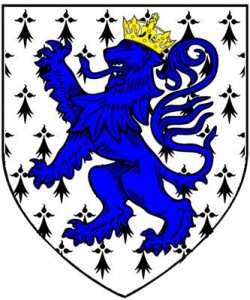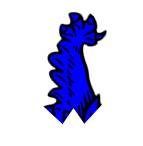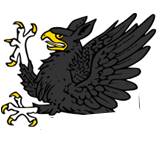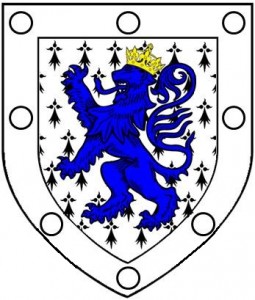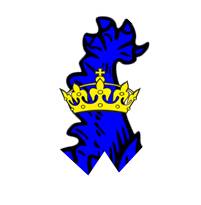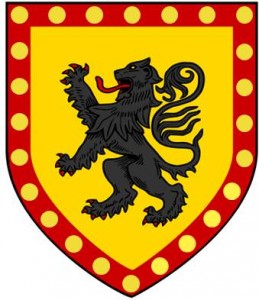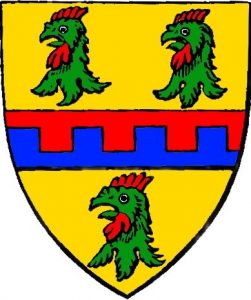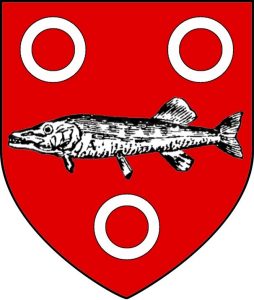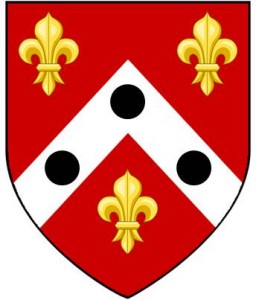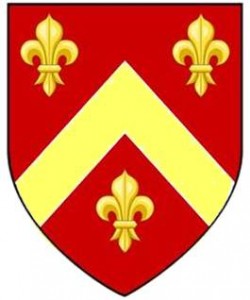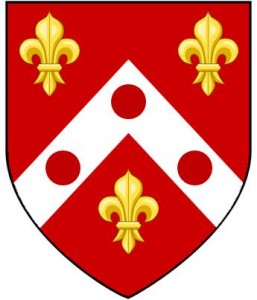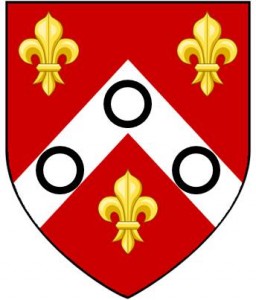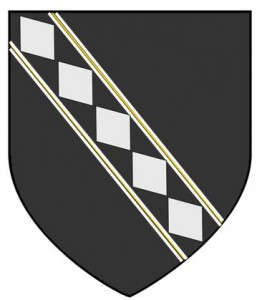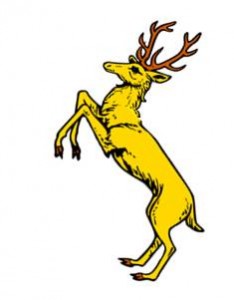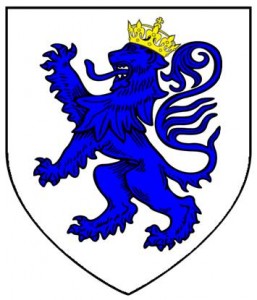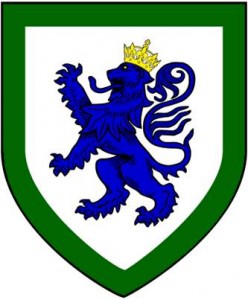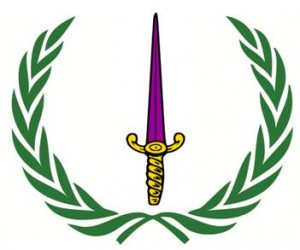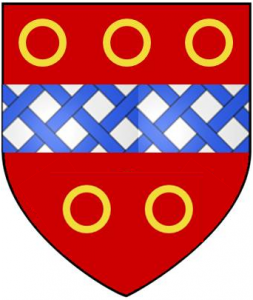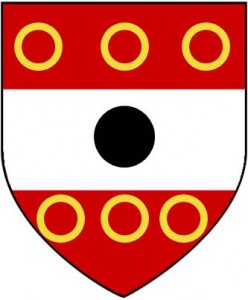Pickering is an English locational surname, named after the town of Pickering in the North Riding of Yorkshire. There are many theories as to the origin of the name. One claims that it derives from the pre 7th century word Picoringas, meaning the sharp point (pic) of a hill, an edge (ora) and a human settlement (ingas), which translates as ‘the people living on the ridge of the pointed hill’, a fair description of Pickering but almost too neat to be true. (Other sources state that the suffix -ing is Anglo-Saxon, meaning ‘belonging to’, ‘related to’ or ‘son of’.) Another theory bases the name on ‘Piker’ and ‘eng’ (a given name + the Old Norse word for meadow) and yet another states that it derives from the men of the pikes (peaks). The most unlikely origin is the one championed by the Tourist Information Center in Pickering. In its handout it states that Pickering, “according to legend, was given its name by King Peredurus in 270 B.C. We are told that the king lost his ring in the River Costa and accused a maiden of stealing it. When a cook found the ring in the belly of a pike caught in the river, the king married the maiden and called the town Pike-ring” (see arms of Alconbury below).
The town of Pickering was recorded as Picheringa in the Domesday Book of 1086. The spelling of the surname used in the family trees listed on this site is Pickering, although numerous versions appear in the documents on which they are based: Pykeryng, Pykering, Pykerynge, Pyckeryng, Pykeringe, Pykeryng, Pyckerynge, Pickring, Pickerin, Pickeringe, Pikering, Pekeryng, etc. In 1157 Stephanus Pikaringa, son of Gamel, swore on oath in a charter regarding the king’s waste in Pickering Marishes, and in the Pipe Rolls of Yorkshire dated 1165 Reginald de Pichering appears as accountant of 10m. for an amercement regarding Pickering forest. Pickerings were already to be found outside Yorkshire as early as 1246 when Henry de Pikeringes was mentioned in the Feet of Fines of Oxfordshire, and Henry de Pakering appeared in the Somersetshire Pleas in 1257. They turn up in such disperse counties as Westmorland, Cumberland, Wiltshire and Dorset in the 14th century. The orthographical skills and whims of the clerk probably account for the different spellings; most of the people recorded were illiterate and the spelling of surnames was not subject to hard and fast rules until about 1850.
A number of families bear the name Puckering alongside Pickering, both variants occasionally appearing in one generation of the same family or even borne by the same person in different records. The Puckerings of Flamborough were the first bearers of this distinction, though documentary evidence points to their name being initially spelt Pyckering. Perhaps the tail of the ‘y’ faded and the clerk copied it as a ‘u’? Whatever the origin, it distinguished Sir John Puckering of Flamborough, the dour Keeper of the Great Seal at the court of Elizabeth I, from the more flamboyant Sir William Pickering of Oswaldkirk, a suitor for the Queen’s hand. It is interesting to note that when new bearers of the name arrived in a parish, the spelling in the church registers tended to reflect the variant already established there, the Pickerings of Holderness being known as Puckering during their stay in Rise, but reverting back to Pickering once they moved on. Pickering is by far the most common variant, though pockets of Puckerings still resist in the East and North Ridings of Yorkshire.
An invaluable source for the geneaology of the landed gentry before the introduction of parish records is the heraldic visitations performed by the three kings-of-arms who each visited distinct segments of the nobility:
- Garter: higher nobility
- Clarenceux: England south of the Trent
- Norroy: England north of the Trent
Their mission was to meet the heads of each family in order to note its pedigree and the coat of arms it bore. The information was then recorded at the College of Arms in London. Visitations in the northern counties started in the late 1400s and had ended by the mid 1660s. J.P. Brooke-Little, heraldic consultant for The Lives of the Kings and Queens of England, explains that the term coat of arms was derived from that fact that it was “displayed on the coat armour (the coat worn over the mail)”. It was also affixed to the “shield, flag and horse trappings, making it easy to recognise a man from a distance”. He goes on to say that “a coat of arms is inherited, in much the same way as a surname, by the legitimate descendants of the person to whom the arms were first assigned or allowed”. Furthermore “no two people shall bear the same coat”, which led to “the adding by junior members of a family of small marks (brisures), such as a star or a crescent, to the arms of the head”. “In medieval times, when it was necessary to recognize these distinctive marks from afar, they were more dramatic and could involve a change of colour or of a fairly major feature in the coat” (see Cheshire and variants below), “but when heraldry left the battlefield for the book plate the need for such changes disappeared and more modest distinctions were used. Today the rule that junior members of a family must add an appropriate mark of difference to their arms is often more honoured in the breach than the observance”.
The Pickering and Puckering arms are shown below.
Pickerings of Killington
Pickerings of Oswaldkirk
Puckerings of Flamborough
Variants and Unidentified
Glossary
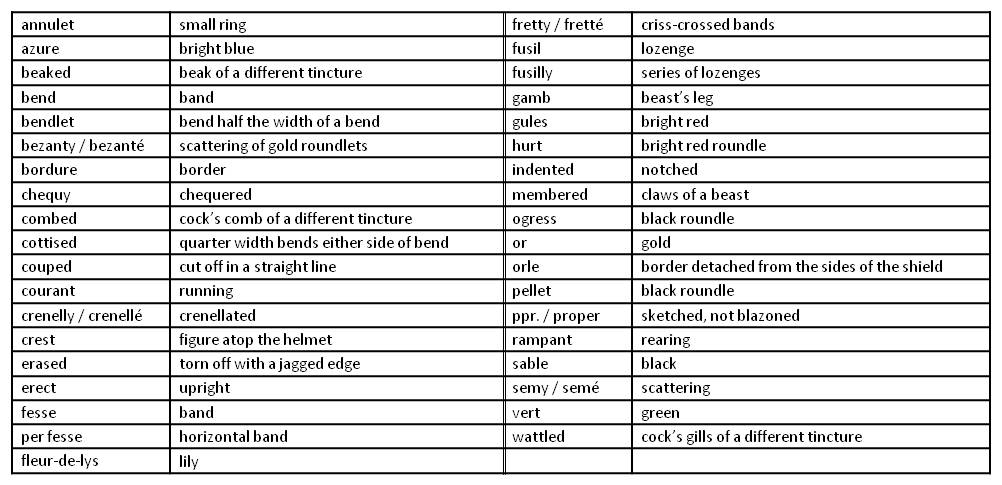
Sources:
General
Surname Database: http://www.surnamedb.com/Surname/Pickering#ixzz1crCulOVF
Forebears: http://forebears.co.uk/surnames/pickering
English Place Names, James Rye: http://www.englishplacenames.co.uk
Pickering Tourist Information Centre: http://www.visitryedale.co.uk/see-do/ryedale-tourist-information/pickering-tourist-information-centre
Domesday Book: http://opendomesday.org/place/SE7984/pickering
Pickering family history: http://www.pickeringfamilyhistory.com/crestpg.php
Coats of Arms from Ireland and around the World: http://www.heraldry.ws/html/pickering-cumberland.html
http://en.wikipedia.org/wiki/Coat_of_arms
The General Armory of England, Scotland, Ireland and Wales, Sir Bernard Burke: https://archive.org/stream/generalarmoryofe00burk
Encyclopaedia Heraldica / Complete Dictionary of Heraldry, Volume 2, William Berry: https://books.google.fr/books?id=bfNfAAAAcAAJ&pg
A Glossary of Terms used in Heraldry, James Parker: http://www.heraldsnet.org/saitou/parker/index.htm
A History of the County of York East Riding, Volume 2: http://www.british-history.ac.uk/vch/yorks/north/vol2/pp461-476
Coats of arms creator: inkwellideas.com/coat_of_arms
The Lives of the Kings and Queens of England, edited by Antonia Fraser
Visitations
Yorkshire Visitations, Brad Verity: http://archiver.rootsweb.ancestry.com/th/read/GEN-MEDIEVAL/2006-11/1163656248
Visitations of the North, Part III, A Visitation of the North of England, circa 1480-1500: available on request
Heraldic Visitation of the Northern Counties in 1530: http://books.google.fr/books?id=ve0OvvM9qr8C&printsec=frontcover&source=gbs_ge_summary_r&cad=0#v=onepage&q&f=false
The Visitation of Yorkshire in the years 1563 and 1564: https://archive.org/details/visitationofyork00flow
The Visitation of Yorkshire made in the years 1584-5 and 1615, Robert Flover and Richard St. George: https://dcms.lds.org/delivery/DeliveryManagerServlet?dps_pid=IE112948
Visitations of Yorkshire and Northumberland in A.D. 1575: available on request
Pedigrees Recorded at the Heralds’ Visitations of the Counties of Cumberland and Westmorland 1615 and 1656: https://archive.org/details/pedigreesrecorde00sainrich
The Visitation of the County of York begun in 1665 and finished in 1666: http://quod.lib.umich.edu/m/moa/ahe1867.0001.001/5?view=image&size=75

